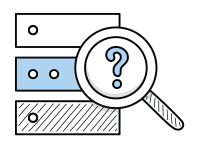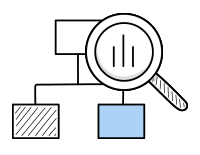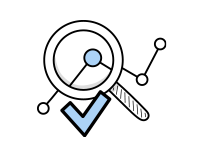Search LEI
Lookup Legal Entity Identifier or Business Data
Search LEI to lookup organization data from millions of Legal Entity Identifiers in the Global LEI System…
Top Tip: Enter your company name and search LEI from across your organization group
Need an LEI? Register an LEI quickly and easily with RapidLEI – the world’s largest GLEIF-accredited LEI Issuer

What is the Search LEI tool?
The global Search LEI tool connects to the GLEIS index of legal entities to lookup and retrieve organization reference data. It tells you more about an organization behind an LEI code. RapidLEI is a Global LEI Foundation (GLEIF) accredited LEI Issuer. We connect to the GLEIF index to retrieve live records.

What can you use the LEI code lookup for?
You can lookup an organization within the global LEI database by its company name, LEI number, ISIN or BIC code. You can initiate new LEI registrations, renew LEIs or transfer them directly from the results table. If your LEI has lapsed, follow the instructions on how to reactivate it, and remember, RapidLEI staff are here to help when needed.

What do the Legal Identifier search results show?
Results include detailed legal entity reference data. For example, the organization’s legal and HQ address, and the current status of both the Legal Identifier and the organization incorporation. You can view its corporate structure to determine whether the organization has parent or children companies within the corporate group. This is useful for company verification and KYC (Know Your Customer) / KVB (Know Your Business).
What is an LEI, and what is it used for?
LEI is the acronym for Legal Entity Identifier. LEI Codes or LEI Numbers are represented by a 20-character string (e.g. 529900T8BM49AURSDO55). The LEI code refers to a Legal Entity such as company, organization, firm, government body, trust, or fund in the Global LEI System (GLEIS).
An LEI record contains information such as the company name, address, incorporation status. They tell you who is who, and who owns whom.
LEI reference data provides identity assurance in financial transactions, KYC (Know Your Customer), Know Your Business (KYB) client onboarding and other organization identity use cases. Any organization, Government body or individual can search the LEI database maintained by the GLEIS and rely on the validated data about the organizations they are doing business with.
The LEI number is based on the ISO 17442 standard. Each Legal Entity Identifier is assigned only to a single Legal Entity, even across different geographical jurisdictions.
What is the Global LEI Index?

The Global Legal Entity Identifier Foundation (GLEIF) index is a global directory of free, openly accessible source of company information for use in financial transactions, KYC, and organization assurance use cases. LEI codes are entered into the LEI index. Counter-parties and relying parties search the LEI index and utilize the verified organization data in transactions and onboarding.
The Global LEI System (GLEIS) contains both level 1 data (who is who) and level 2 data (who owns whom, both parent and children) for the organization behind each LEI code issued.
How to find lookup or verify an LEI
Use the global LEI Search box on this page to enter your Company Name. We will search the Global LEI Index and return all records associated with the Company Name entered. The LEI code will be displayed in the search results, and you can click on the record to obtain further LEI Reference Data about your Company.
How to find an LEI by Company
You can lookup legal entity information by Company Name, LEI Code if you know it, or International Securities Identification Number (ISIN) or Bank Identifier Code (BIC) numbers. Just enter the name or code into the search box.
The LEI lookup tool presents summary search results for all possible records, click on the legal entity in the results to view the full LEI record.
What does an LEI record tell you?
The global LEI record will inform you of current legal entity reference data as well as its history, including:
- Company name and ‘other’ names the legal entity has registered
- Legal and HQ address and country
- The local business registry used to register the organization
- The jurisdiction of registration
- The corroboration level (e.g. how the LOU verified the organization details)
- The LEI Issuer (also known as the GLEIF accredited Legal Operating Unit, or LOU)
- The STATUS of the organization and the STATUS of the LEI code
- If the legal entity has other identifier codes, specificially International Securities Identification Number (ISIN) or Bank Identifier Code (BIC)
- The LEI registration date and when the record last updated – important for historical changes to the entity reference data
- Ownership structure: If the legal entity has parents, either/and direct parents, or ultimate parents – who owns whom
- Ownership structure: If the legal entity has children, i.e. it is the parent of other legal entities
How to how understand a Legal Entity Identifier record
What is the Entity Status?
The LEI record reveals verification information on the legal entity used for global Know Your Customer (KYC), financial transactions or organization identity assurance purposes. It will tell you if the legal entity has kept its LEI code active and information up to date, and the operational / incorporation status of the organization.
- ACTIVE: the Legal Entity reports it is legally registered and operational.
- INACTIVE: the Legal Entity reports it is no longer legally registered and/or operating. This could be as a result of business closure, acquisition by or merger with another (or new) Entity, or determination of illegitimacy.
What is the LEI Status?
- ISSUED: The new LEI registration is complete and the LEI code issued. It is not yet necessary to renew the LEI.
- LAPSED: The LEI registration has not been renewed by the NextRenewalDate and is not known by public sources to have ceased operation.
- RETIRED: An LEI registration for a legal entity that has ceased operation, without having been merged into another entity.
Note: The GLEIF uses additional less common LEI statuses. For more information visit RapidLEI’s LEI Knowledge Base.
What are the different LEI validation levels?
- FULLY CORROBORATED: Authoritative public sources, such as business registries and other directories, or are used to validate against and corroborate the entity information submitted by the applicant and subsequently contained within the LEI record. RapidLEI refers to fully corroborated LEIs as validated.
- PARTIALLY CORROBORATED: As per Fully Corroborated, but due to conflicts of authoritative data or unavailability of data, the legal entity information submitted by the applicant can only be partially corroborated.
- ENTITY SUPPLIED ONLY (ESO): The entity information cannot be corroborated against public sources. The record comprises of data submitted by the legal entity only. RapidLEI prefers to not issue ESO unless absolutely necessary and refers to these types of records as non-validated.
See Validated vs. Non-Validated issuance trends in RapidLEI.com’s live LEI Statistics section.
How to Register an LEI
If you don’t already have Legal Identifier code, registering one is quick and easy with RapidLEI. Go to RapidLEI’s Register LEI page to begin the issuance process.
Steps to register your LEI quickly:
- Provide company details
- Check that the retrieved information is what you expect
- Wait as RapidLEI automated verification systems (and if needed staff) check the details, this usually only takes minutes
- Once validated, the LEI is uploaded to the Global LEI System index and your organization, fund or trust is now part of the LEI ecosystem
How to renew an LEI
You can initiate a renewal directly from the Search results. Just click Renew next to the LEI record needed for renewal. Alternatively, go to RapidLEI’s LEI Renew page to begin the renewal process.
Steps to renew your LEI quickly:
- Log into your RapidLEI account. Your dashboard displays the number of upcoming renewals.
- Select the Legal Entity Identifiers you wish to renew. You can do this individually, or in bulk.
- The system will check for business data changes with your local business registry.
- You will be charged the renewal rates displayed in your account.
If you have an urgent renewal, let us know and we will help!